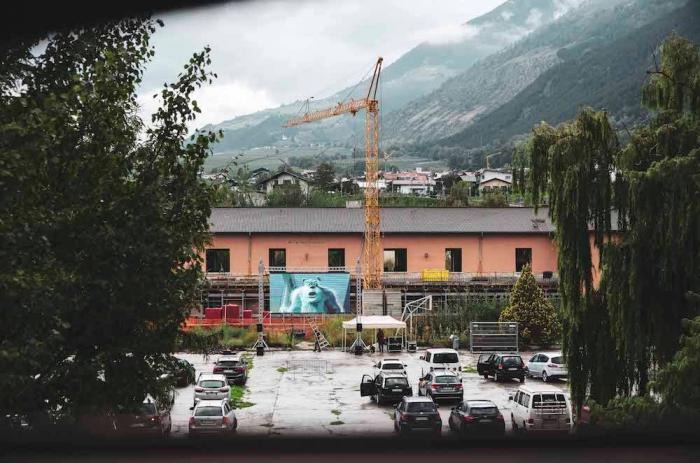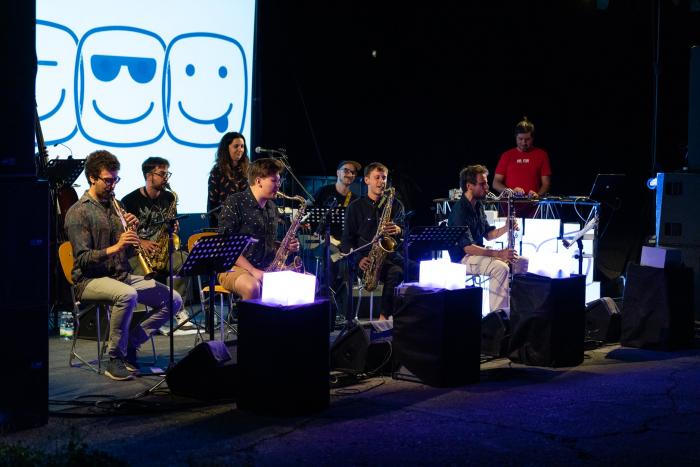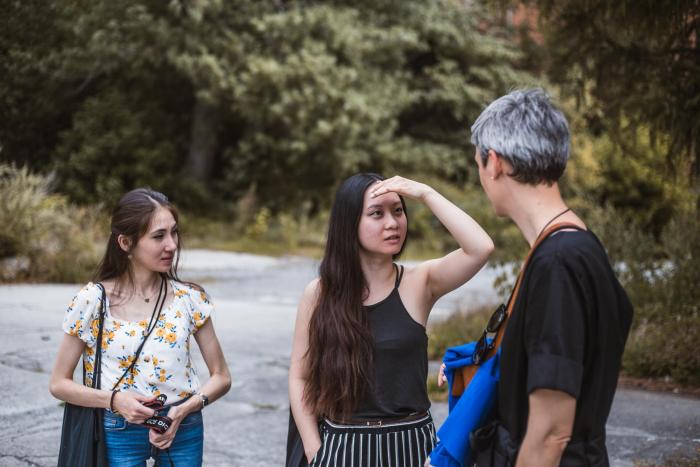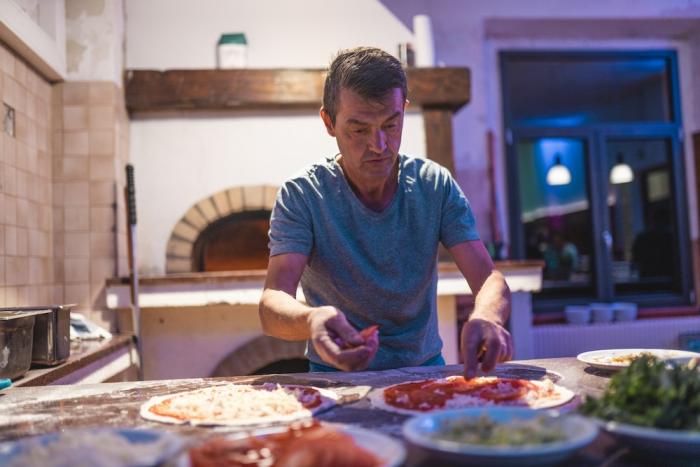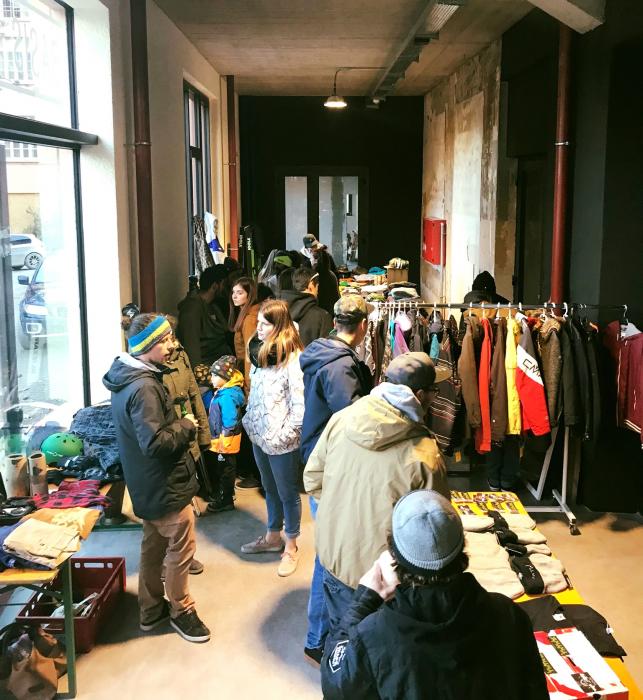I. SUMMARY INFORMATION
Project
269486
Status
Submitted
Award category
Mobilisation of culture, arts and communities
You want to submit
NEW EUROPEAN BAUHAUS AWARDS : existing completed examples
Project title
BASIS Vinschgau Venosta
Full project title
BASIS Vinschgau Venosta
Description
BASIS Vinschgau Venosta is a Social Activation Hub, initiated as a community project of regeneration of the former military areal and barracks Caserma Druso in South Tyrol. BASIS Vinschgau Venosta offers spaces, community events, network facilitation, and educational formats to enable the exchange of experiences, shared learning, and practical ways of doing. In this way BASIS Vinschgau Venosta facilitates the goal of all people involved to experiment in the activation and building of new ideas.
Where was your project implemented in the EU?
Italy
South Tyrol
Corzes street, 97
Silandro
39028
When was your project implemented?
Has your project benefited from EU programmes or funds?
Yes
Which programme(s) or fund(s)? Provide the name of the programme(s)/fund(s), the strand/action line as relevant and the year.
FESR 1053 – “BASIS Business and Service Incubator Schlanders” 201
II. DESCRIPTION OF THE PROJECT
Please provide a summary of your project
The goal of BASIS Vinschgau Venosta is to empower the local population to be actors of change by bringing under the same building infrastructure and network expertise. The project of BASIS Vinschgau Venosta is operating a fourfold framework, namely: economical, educational, cultural, social. Within those dimensions BASIS Vinschgau Venosta is working actively to drive regional development on a systemic scale from individual to municipal, regional, national, and on to the international domain.
In the first two dimensions, BASIS Vinschgau Venosta places economic and educational priorities in its core business and tries to comprehensively compensate for the locational disadvantages of the Vinschgau Valley. For initiatives, startups, sculptors, and freelancers of all professions, it is a chance to gain a favorable foothold, but also a new way of seeing and understanding the composite character of society. Hereby, the project works in the niche, activates people and communities, achieves intersections, and thus opens up innovation potential. BASIS Vinschgau Venosta aims to show how new forms of collaborative working can lead towards a better and more inclusive development of society, through the creation of synergies. Providing new learning formats that meet the demands of the emerging, digitally connected world is also important in this regard.
In the socio-cultural dimension, BASIS Vinschgau Venosta is engaging especially the idea of the workshop. As a place for doers and makers, the site offers space for niche culture and underground scenes, preserving craftsmanship. By re-using the former Palazzina Servizi, the project actively creates free space for creativity, experimentation, and contemporary ways of working, motivating the population to actively shape their living and economic space. The focus is on the promotion of trans-sectoral and intercultural thinking in terms of personal as well as non-profit development, international
Please give information about the key objectives of your project in terms of sustainability and how these have been met
BASIS Vinschgau Venosta was built on the three pillars of environmental, social, and economic sustainability. The measures taken are contributing to the SDGs of the United Nations, to the Green New Deal, and the Circular Economy Action Plan of the European Union. BASIS Vinschgau Venosta is working on making its impact measurable and to set sustainability targets. However, it strives to make sustainability the starting point for everything, something that is a given, a status quo.
In addition, BASIS Vinschgau Venosta is repeatedly getting making use of material and cultural heritage that would otherwise be discarded. By utilizing spaces and machinery, BASIS Vinschgau Venosta is offering the possibility to return to the value and practice of sharing instead of owning.
Moreover, the rooms and spaces are multifunctional which reduces the need for singular rooms that would consume more resources. Small efforts to making more sustainable choices involve using recycled paper for printing and buying locally sourced products. The entire value chain from the field to the fork for instance in agriculture is located in the Vinschgau valley and the work goes from its hands. Moreover, as a source of creative experiences BASIS Vinschgau Venosta is organizing events with a twist such as repair cafés, (dis)dancing nights, or a creative education studio for virtual encounters.
BASIS Vinschgau Venosta is as inclusive as possible to be a place that builds community. The project offers opportunies to people, functioning as a platform of reference. The organization tries to showcase an alternative to renting exclusive spaces and gaining the highest possible profit. It is using adapted renting prices for the different users and trying to offer spaces for an affordable price. In addition to that, the association is fostering education and integration.
Please give information about the key objectives of your project in terms of aesthetics and quality of experience beyond functionality and how these have been met
To create a qualitative experience and intercultural relationship is a complex process of building, that is highly valued and attentively pursued by BASIS Vinschgau Venosta. Through a wide range of project engagements, the project team, and workgroups, analyze, change, and interprets the realities, perceptions, values of their interactions. Through their direct influence on the surrounding environment, those relationships enable the aesthetic influence to traverse the direct milieu and extend to new emergent nodes of disciplines.
The experiential aspect thus combines a multidisciplinary approach of “trial & error” towards sustainable social change, which is developed with local partners, international consortiums, the municipality of Silandro, and the Vinschgau region. The series of interventions thus follow a methodological approach in which the transformative aspect of BASIS Vinschgau Venosta can be described as the experience of a knowledge process that brings an innovative advantage. The aesthetic communicative competence of BASIS Vinschgau Venosta acts on three levels of the transformative process in the community: cognitive, affective, and behavioral.
On the affective level, BASIS Vinschgau Venosta interacts with the wider public and regional awareness on different levels. Everyone benefits from the return of the project building activities, from local craftsmen and companies to artists, neighbors, and education facilities by building connections. What is new is a collective awareness of society for the necessity of a positive attitude towards the new and to participate in the rapidly changing rules of the digital world.
BASIS Vinschgau Venosta underlines this aesthetic understanding allowing for a shared system of values to be built upon, through an exchange of students with crafts professionals in example and cooperation by hosting the Master of Science of Conceptual Architectural Heritage Preservation together with the Donau University in Krems
Please give information about the key objectives of your project in terms of inclusion and how these have been met
It has been recognized by BASIS Vinschgau Venosta, that lack of open spaces offerings, and sites of informal gathering for individuals and groups lead to an impoverishment of interactions among the diversified actors living on the same territory, further causing the risk of having a fragmented community.
What BASIS Vinschgau Venosta wishes then to achieve in consideration to spatial transformation, is to create, through its available physical place, an environment where the community can gather and interact, making it possible to share experiences and expertise among people of different ages, professions, and cultural backgrounds. Not only is the goal of the project to guarantee informal accessibility to the spaces, but also to give a thoughtful structure to the process of building social cohesion within the community. BASIS Vinschgau Venosta is then acting on two intertwined levels: to create studio alike interactions, it is necessary to organize moments of encounter, so that the community feels invited and more naturally welcome around the project areas.
What the project is doing in terms of praxis, both in organizing encounters and informal gatherings are implemented through social participation and co-creation of events, educational formats, and networked learning. Social events include music concerts, as well as jam sessions, cultural festivals, exchange of second-hand tools and materials, movie nights, and discussion tables. Educational formats are another path undertook by BASIS Vinschgau Venosta in favor of social inclusion, since the process of learning new skills and expertise will facilitate the dialogue among individuals and will stimulate the exchange of diversity.
Lastly, the creation of the network is per sè already an implementation of inclusive behavior bridging differences and engaging essentials in its actions through the workshop activities: many diverse individuals can meet and create long-lasting relationships.
Please give information on the results/impacts achieved by your project in relation to the category you apply for
BASIS Vinschgau Venosta mission is to support the actors involved in the creative industry, to give space to art in its most extended meaning: art as an instrument of sharing, art as an inspirational discourse, art as an enhancer of the wellbeing of the local community. BASIS Vinschgau Venosta vision was defined after the identification of some problems, meaning the limited variety of cultural initiative in the local context, lack of spaces for the niche culture, few spaces for art in the rural context, and few workspaces for creative professions, few interactions among groups in the local community.
To these problems, BASIS Vinschgau Venosta answered very practically by first of all offering space for artists and creatives, and for the community to meet art and creativity. Indeed, BASIS Vinschgau Venosta created four artist residencies, ateliers and workshop rooms for artists and craftsmen, a FabLab/Makerspace open to the public, an open lab for kids, a coworking space for creative and non-creative professions, and a concert house for music events, theater, conferences, and cultural events. More than just spaces, BASIS Vinschgau Venosta hosted events and encounters organized by or for the community. Before COVID-19, there was a weekly appointment (Hoangartn) that was organized to let the coworkers, artists in residency, and the local community meet for an informal evening. Other formats that happened in the past are the Autokino, a drive-in cinema hosted in the old military areal; Stammtisch, informal roundtable discussion; workshop; concerts, and open mic nights.
The result that BASIS Vinschgau Venosta reached is a more interactive community through the coworking space and the open events; the creation of job opportunities through BASIS Vinschgau Venosta network for artists and creatives; involvement of the local community in the organization of cultural events and taking care of the space; involvement of kids in cultural projects.
Please explain the way citizens benefiting from or affected by the project and civil society have been involved in the project and what has been the impact of this involvement on the project
Observing the context and necessities that led to the creation of BASIS Vinschgau Venosta and the statement of its mission, one can deduce that the endeavor towards the civil society of Schlanders-Silandro constitutes a systemic and substantial strive in assessing the performance of the project. There exists a continuum exchange between BASIS Vinschgau Venosta and the multiple systemic scales surrounding the old military barracks, new circumstances, breaking barriers, and creating meaning beyond the history of the building.
On the microsystem scale BASIS Vinschgau Venosta is engaging its team, co-workers, artists, builders in a dialogue of positive relations, emphasizing personal growth, purpose in life as well as the meaning of competence and autonomy of action in sight of sustainable development as a trade for action.
Voluntary groups, pioneers, associations, and the local neighborhood are being involved on a mesosystem scale in which participatory network learning is fostering social coherence and equality, integration of marginalized milieus, and collaborative actions. Migrants, youth groups, grandparents as well as underground music culture or skating kids deserve a platform to build on.
To ensure the forthcoming in the region, BASIS Vinschgau Venosta is further engaging on the exo-system scale directly with political parties, policy development as well as research institutes such as EURAC Research, NOI Techpark, and the Free University of Bozen-Bolzano. Active exchange and participation in the regional debate on future change is an important pillar in long-term strategic decision-making.
At large, civil society is affected by BASIS Vinschgau Venosta in the sense of cultural belonging and active responsibility in shaping the future. This provides an added value to the possibility to express oneself through the conditions-free renovation of an old building, according to one’s preferences and art.
Please highlight the innovative character of the project
BASIS Vinschgau Venosta highest innovation is to bring the entrepreneurial, artistic, crafts-man, and social dimensions under the same roof. The goal is to directly foster diversification of skills and economy, making it more resilient and sustainable ways for the future to be more inclusive.
In the old military barracks, BASIS Vinschgau Venosta has created a coworking space, a FabLab, artist in residencies, meeting rooms, workshop ateliers, learning studios, and a house for concerts and congresses. The goal of BASIS Vinschgau Venosta is to work against the fragmentation of rural and urban, against brain drain which is affecting the region, by creating spaces for those creative professions which would otherwise flee the rural context. By giving artists and creatives spaces to work, create and live, it is calling back people that have left the region or international talents that are attracted by the interesting reuse of the space and the active community. Since BASIS Vinschgau Venosta sees creativity as a common virtue between artists, craftsmen, and entrepreneurs and as a key element to solve modern challenges, the project is including also enterprises in its focus.
The main activities include events to create connections among the local enterprises and to bring impulses about topics of interest for the enterprises (digitalization, sustainability, brand identity...). BASIS Vinschgau Venosta is supporting enterprises in finding funds for research and innovation, at the local and European level, and in project writing and management.
For the community, BASIS Vinschgau Venosta most innovative idea was to state that in the region where the project is located, there are few aggregation places where people can meet and share experiences without having the obligation to pay. BASIS Vinschgau Venosta encourages the community to encounter and exchange by offering free off-spaces that are open to the public and creating community encounters.
Please explain how the project led to results or learnings which could be transferred to other interested parties
Considering the replicability and transferability of projects is of main importance to BASIS Vinschgau Venosta since its experimental trait is rooted in its enterprise philosophy.
The cooperation and the exchange in the network with the partners/stakeholders enable the most direct type of transferability of products and results. Project ideas that were implemented with local resources can be projected onto similar areas on the European scale and improved in exchange. The use of quality methods (also called quality techniques, quality procedures) serves BASIS Vinschgau Venosta for the improvement of product or process properties of the organizations and in the development and support of pilot projects, in a synergetic effect to continuous improvement of its internal processes as well as to include learning from past projects and improvements for future ones.
In the course of the strategic development of BASIS Vinschgau Venosta, these applied methods can / will be adapted to changes concerning future use and embedding in other milieus such as e.g. in the creative industries or through complex social issues.
With the development of a knowledge-intensive range of services in the periphery and support for public and private bodies to carry out research activities, BASIS encourages to co-create with new companies and startups, as well as established companies, in product and process innovation. This enables all stakeholders involved to develop their potential much better, using instruments that help improve the transfer of results from R&D and innovation.
In general, replicability and transferability of projects are about improving the framework conditions and creating offers that promote innovation. It is about raising awareness of a "resilient" society that increases its productivity in an innovative climate and focuses on meaningfulness and real necessities.
Is an evaluation report or any relevant independent evaluation source available?
No
III. UPLOAD PICTURES
IV. VALIDATION
By ticking this box, you declare that all the information provided in this form is factually correct, that the proposed project has not been proposed for the Awards more than once under the same category and that it has not been subject to any type of investigation, which could lead to a financial correction because of irregularities or fraud.
Yes
